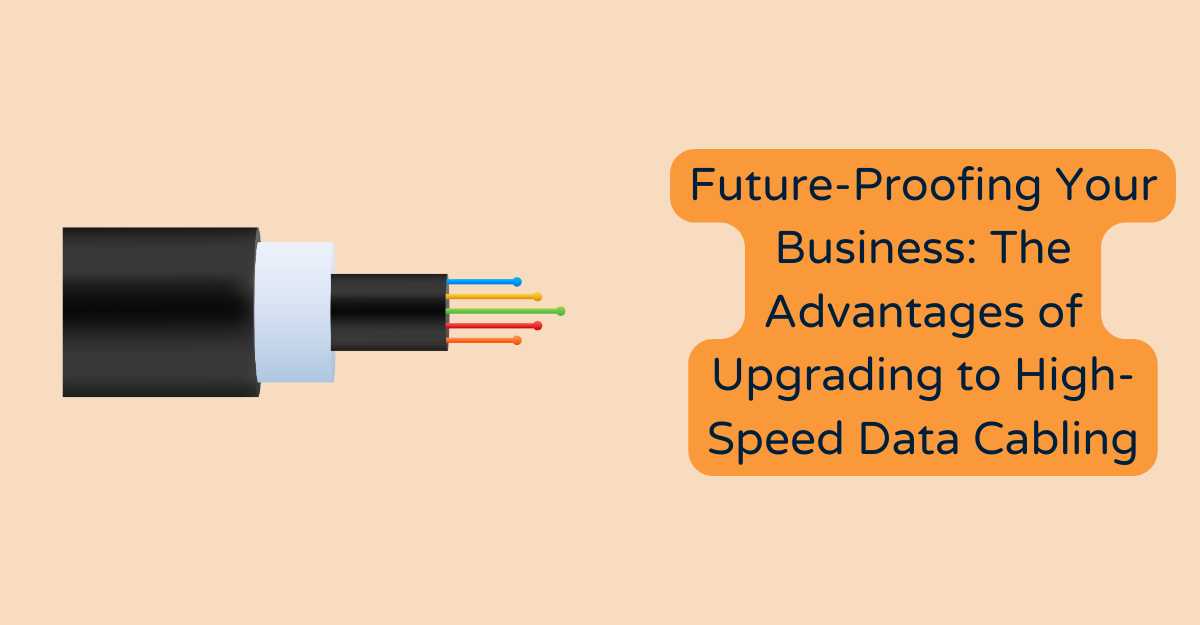
In this era of rapid digital transformation, companies must take preemptive steps to ensure their operations can thrive in the future. One such step involves the critical upgrade to high-speed data cabling systems. In the heart of metropolitan business hubs, like San Francisco, maintaining an edge means ensuring your business’s infrastructure facilitates swift and reliable data transfer.
Hence, the discussion around structured cabling services is more relevant than ever, involving solutions that cater to the demands of progressive business environments without succumbing to the pressures of aggressive marketing.
Key Takeaways
- High-speed data cabling is essential for modern business operations.
- Upgrading cabling infrastructure supports future scalability and technological integration.
- Investments in high-quality data cabling can lead to long-term operational and financial benefits.
The Backbone of Connectivity
The modern enterprise is an intricate web of data transactions and communications dependent on a robust data-cabling infrastructure. From customer service interactions facilitated through VoIP to the massive data transfers inherent in cloud computing and storage, enterprises require a solid foundation for these digital processes.
It’s evident that an efficient, reliable network cabling setup is mission-critical the very skeletal framework supports the myriad functions and services a business provides.
Speed and Efficiency: The Core Benefits
Why obsess over cabling? The answer is brief: sheer speed and efficiency. Imagine data as a train; your cabling is the tracks it zips on. Older, outdated cabling is akin to rusty, misaligned tracks where trains crawl—modern, high-speed cabling provides a seamless highway for data to speed through.
This improved performance translates to faster file transfers, better video conferencing quality, and a more capable and reliable network overall. Investing in high-speed data cabling means investing in the lifeblood of your business a network that facilitates accomplishments rather than hindering tasks.
Choosing reputable structured cabling San Francisco professionals for your business is crucial as they ensure the proper installation and organization of your network infrastructure, minimizing downtime and maximizing efficiency. With their expertise, companies can easily avoid costly errors, achieve seamless connectivity, and adapt to future technological advancements.
Advancements in Data Cabling Technology
Data transmission has come far from the original coaxial cables and Cat5 lines. Current data cabling solutions, such as those deploying the Cat6 or the more recent Cat7 standards, promise far superior speed and reduced cross-talk, marking significant advancements in digital infrastructure capabilities.
With the explosion of data-centric operations across every sector, such advancements are not merely conveniences but essential upgrades that ensure an organization’s technological backbone is future-ready.
Enhancing Business Operations with High-Speed Cabling
Many case studies underscore how adopting high-speed data cabling fortifies the backbone of business operations. The benefits echo universally from multinational corporations to small enterprises: streamlined operations, elevated throughput, and a significant reduction in the aggravation of jittery network performances.
Upgraded infrastructure is not merely about staying current; it’s about leveraging the advantages to foster an environment of accelerated productivity and innovation, ultimately spurring business growth.
Reliability and Reduced Downtime
Every minute a network is down, the potential for lost opportunities, revenue, and customer trust escalates. This is where the reliability of high-speed data cabling comes into play. Modern cabling provides a means to reduce system downtime and the negative impact it can have on business operations.
Through the use of quality materials and advanced technological designs that resist environmental factors and electronic interference, businesses can rely on a stable and consistent network.
The Scalability Factor
Scalability is the hallmark of a forward-thinking operation. As a company grows, its data infrastructure must evolve, responding to increasing usage demands without buckling under pressure. Ideally, an upgrade to high-speed data cabling occurs well before the signs of struggle manifest.
High-speed cabling offers a secure path to embracing burgeoning trends like the Internet of Things (IoT) and advanced AI applications, creating a resilient infrastructure adaptable to the relentless pace of technological innovation.
Investing in Future-Proof Infrastructure
Investing in cabling infrastructure is an exercise in foresight. Decision-makers must weigh the immediate cost against the lasting advantages a quality high-speed network can delay or negate the necessity for frequent upgrades.
This spells out a robust return on investment as the strategic advantages of dependable connectivity uninterrupted service, efficient operations, and customer satisfaction continue to pay dividends well into the future.
Considerations When Upgrading Data Cabling
Intelligent investment in cabling infrastructure begins with carefully evaluating current capabilities against future aspirations. Identifying the goals and needs of the business is essential to ensure the new cabling system can handle not only today’s workload but is also attuned to tomorrow’s advances.
An important step is mapping out a detailed plan that outlines the shift towards improved cabling, as captured by educational resources that offer a blueprint for undertakings centered around cabling upgrades.
Overcoming Common Challenges
Anxiety related to the costs and disruptions of network upgrades is commonplace. However, with conscientious planning and competent execution, many of these concerns can be effectively managed, if not altogether avoided.
This process often involves collaborating with seasoned professionals in structured cabling services who can bring their expertise to ensure a seamlessly integrated system. A carefully orchestrated transition to high-speed data cabling positions businesses to meet current demands and confidently look to the future with an infrastructure built to last.